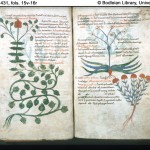 An associate English professor at North Carolina State University, Raleigh, Timothy Stinson, has begun DNA testing medieval manuscripts.
An associate English professor at North Carolina State University, Raleigh, Timothy Stinson, has begun DNA testing medieval manuscripts.
Since parchment was made from animal skin, there is genetic material to be found in the pages of the books themselves.
Thousands of fragile manuscripts still survive from the Middle Ages (roughly 400 to 1500 CE), a time when most of Europe’s population was illiterate, and monks transcribed nearly all of the books that circulated around the continent. Until recently, scholars relied on visual analysis (such as handwriting samples) to trace the origin of most ancient texts. But Stinson says that more precise genetic analyses are possible because the preferred “paper” of the day was thin parchment made from the skin of local cattle, sheep or goats. “DNA offers much more specific information, but no one’s mapped it yet,” he says. […]
Medieval manuscripts often were written on pages made from the skins of as many as 100 different animals, according to Stinson. But scholars speculate that, at least until the mid-15th century, most books were made from local herd animals, which could make tracing their point of origin fairly reliable.
His goal is to create a large DNA database from manuscripts with a known provenance, and then use that database to pinpoint where unknown manuscripts may have come from.
The genetic material might also link manuscripts which have been separated over time and distance. There may be all kinds of partial books amenable to reconciliation scattered through libraries and collections around the world.
The database would be replete with information about quotidian aspects of medieval life, like herd movements and trade routes.
For a lovely browse of medieval manuscripts online, check out Oxford University’s Bodleian Library site.